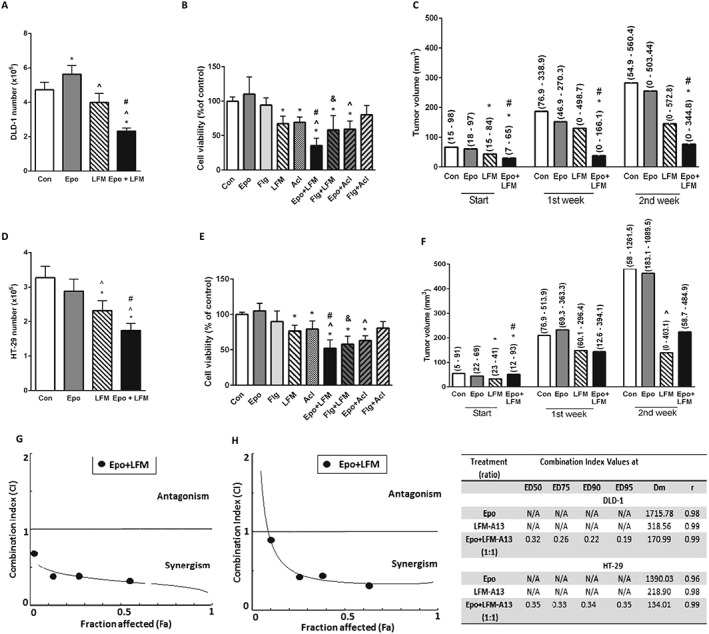Figure 5.

Impact of Epo and LFM‐A13 (LFM) and their combination on human colon models. Number of DLD‐1 (A) and HT‐29 (D) cells after 48 h incubation with Epo, LFM and their combination. Results are presented as means ± SD, n = 6, *P < 0.05 (vs. Con), ^P < 0.05 (vs. Epo), # P < 0.05 (vs. LFM‐A13). Comparison of Epo, filgrastim (Flg), LFM and Acl effects on the viability of DLD‐1 (B) and HT‐29 (E) cells. Results are presented as means ± SD, n = 6, *P < 0.05 (vs. Con), ^P < 0.05 (vs. Epo), # P < 0.05 (vs. LFM‐A13), & P < 0.05 (vs. Flg). The effect of the combined activity of Epo and LFM on tumour volume in DLD‐1 (C) and HT‐29 (F) xenografts. Start – before agent administration, 1, 2 – after first and second week of treatment. The results are presented as median values (minimum – maximum), n = 5–63. Statistical analysis of change in tumour volume in DLD‐1 (C) and HT‐29 (F) xenografts; *P < 0.05 (vs. Con), ^P < 0.05 (vs. Epo), # P < 0.05 (vs. LFM‐A13). The dual combination of Epo and LFM‐A13 in DLD‐1 (G) and HT‐29 (H) at a ratio of 1:1 indicated a mostly synergistic effect; however, the CI value was 0.9 for the lowest concentrations, indicating an additive effect in the HT‐29 line. The table summarizes the Cl values at ED50, ED75, ED90 and ED95 (right). It is worth noting that of all dual combinations, the most potent anticancer agent demonstrated marked synergy at almost all effect levels.
